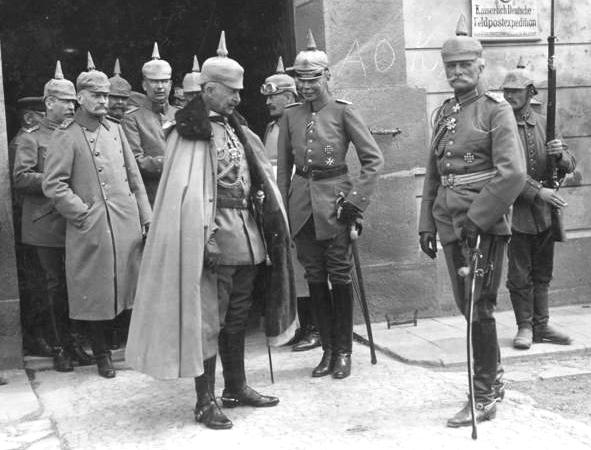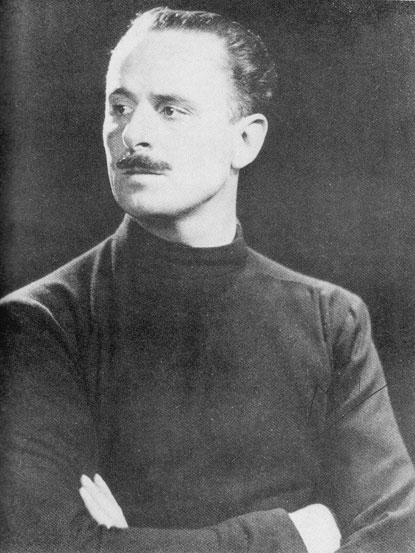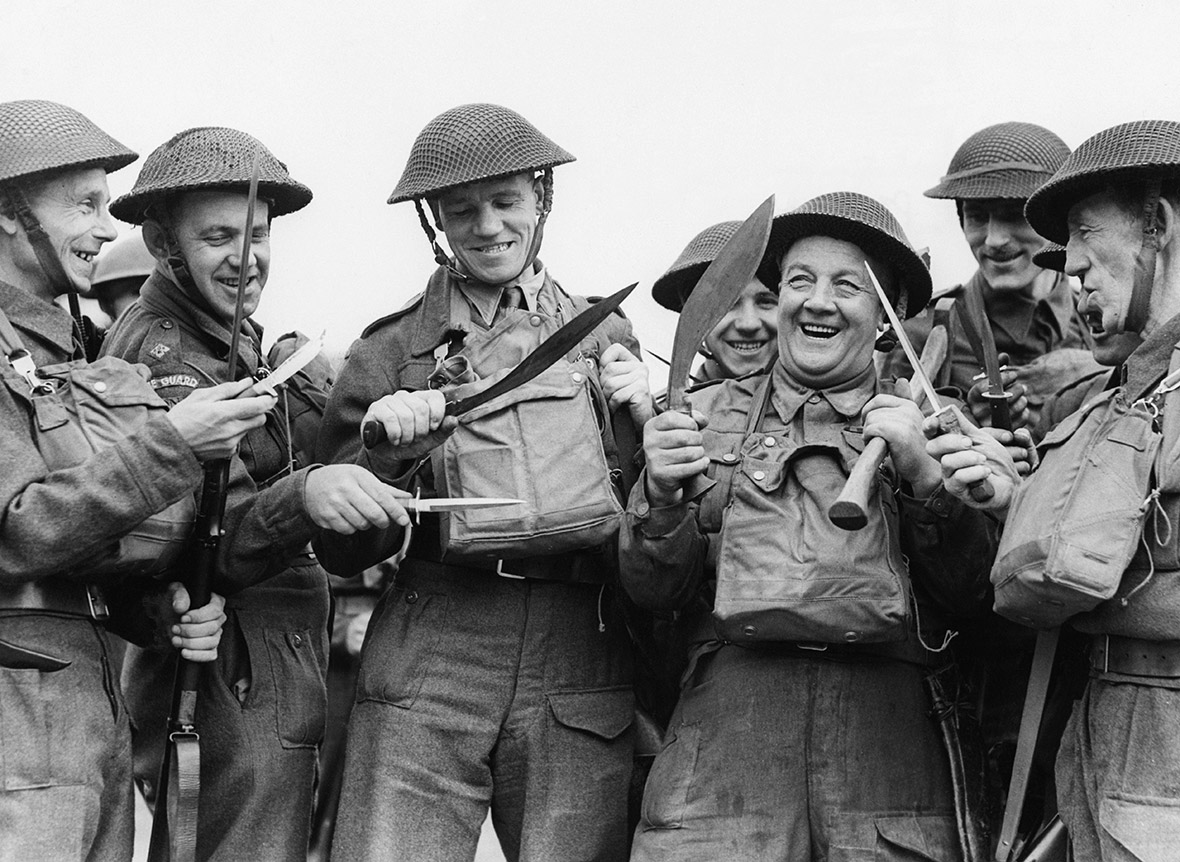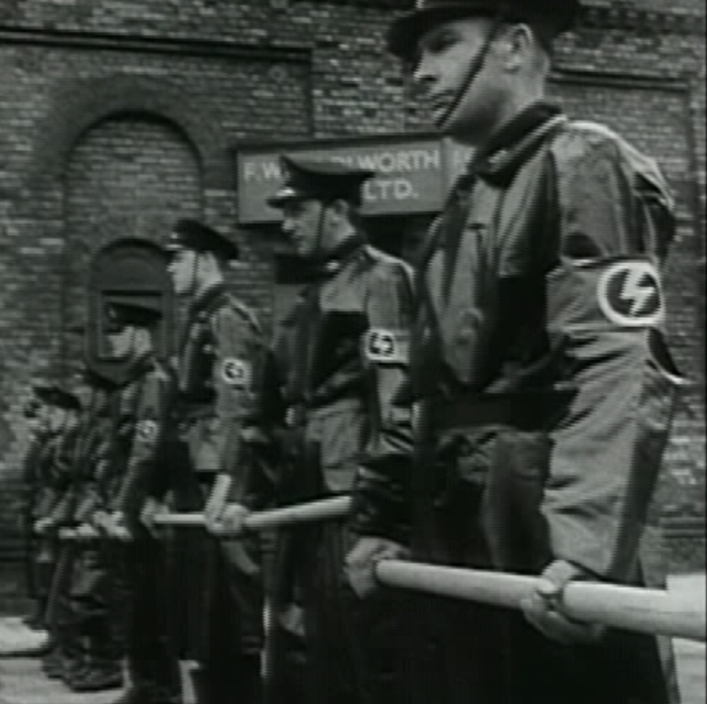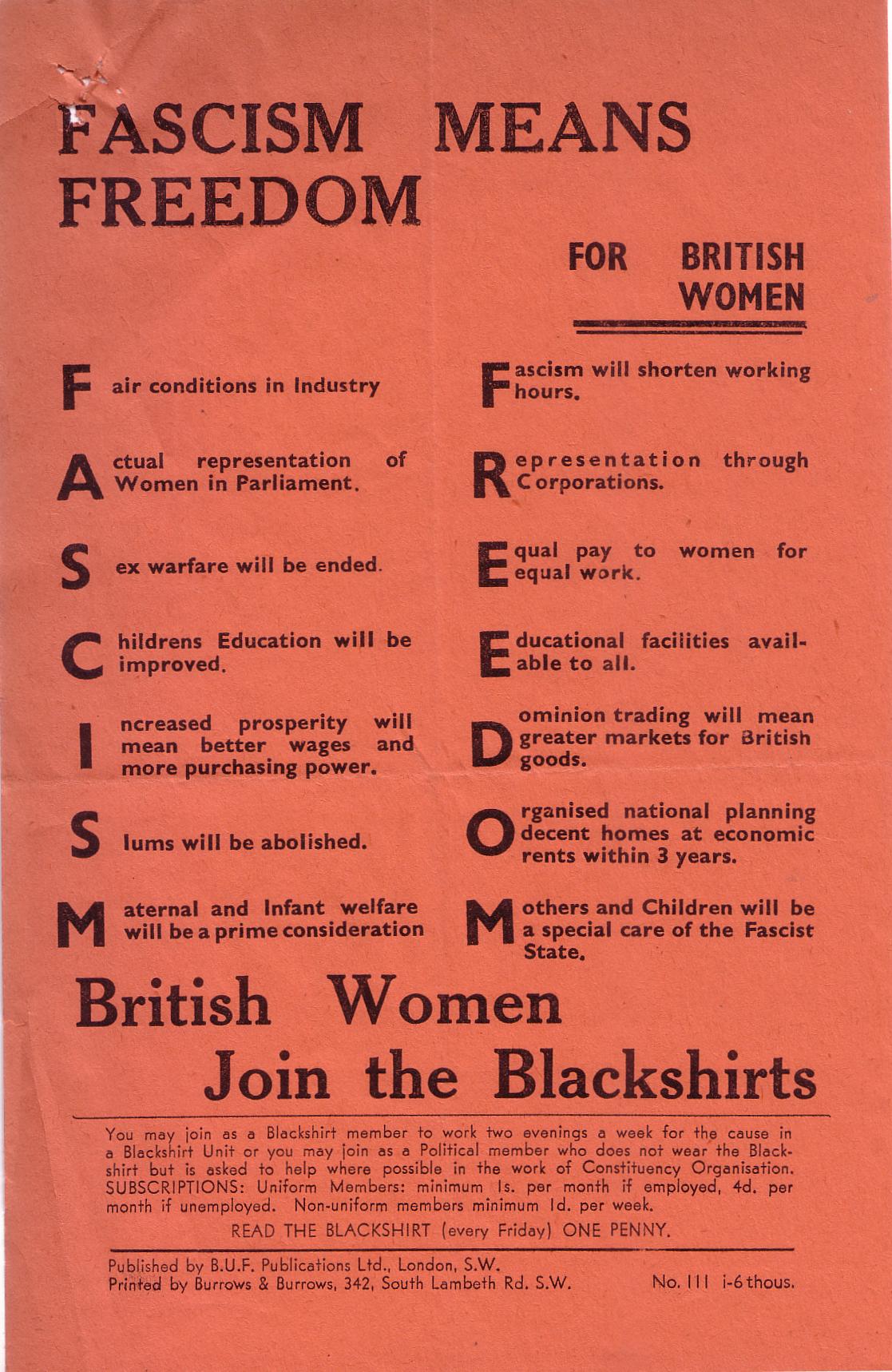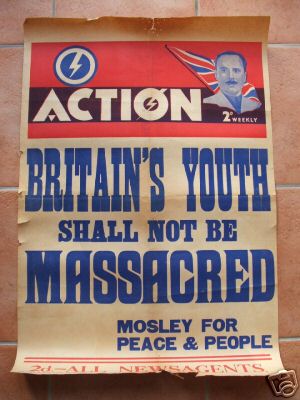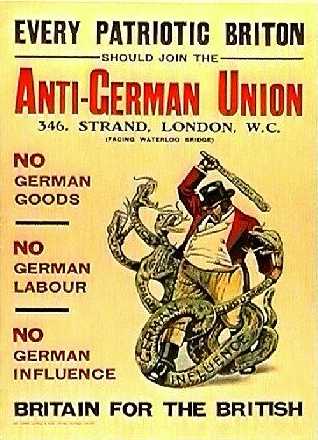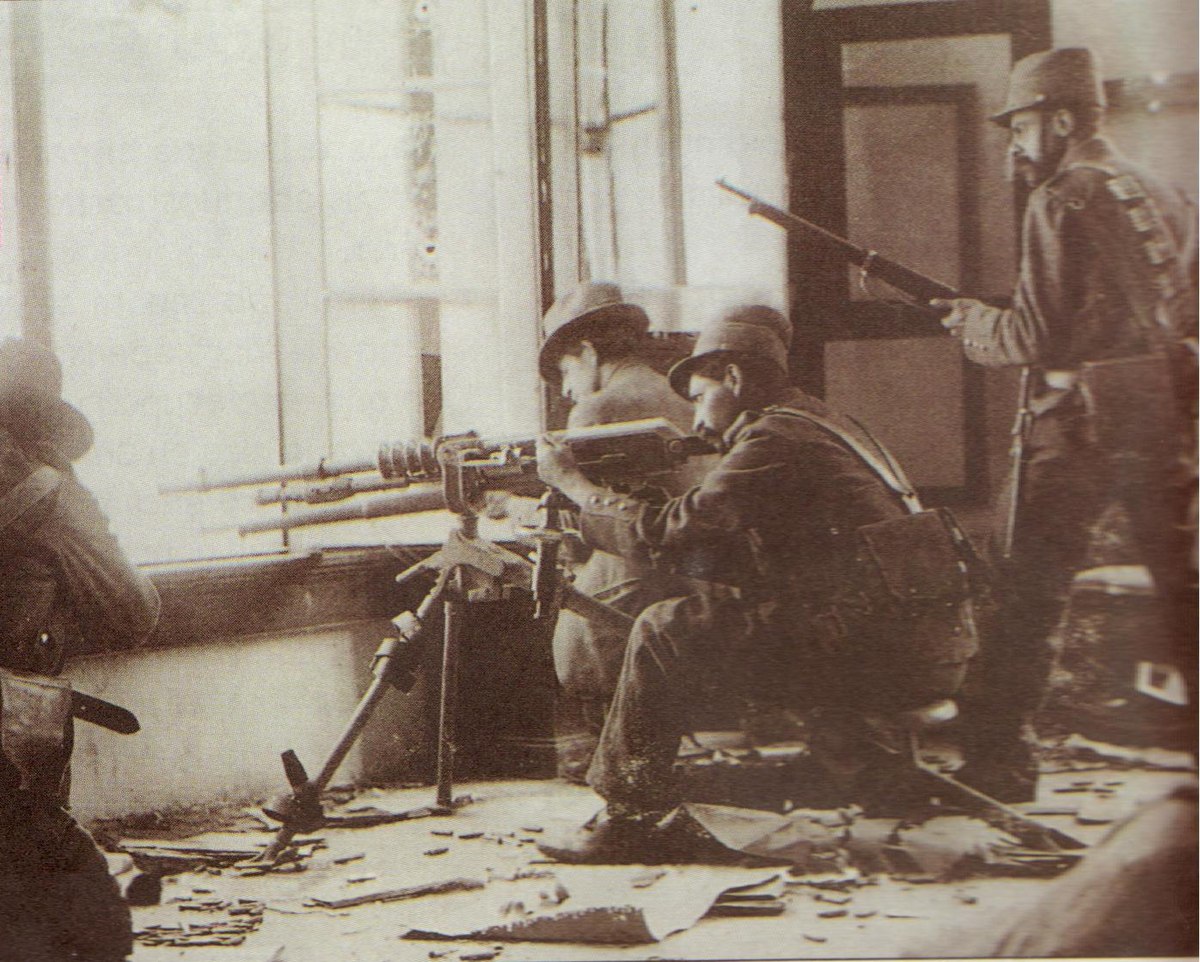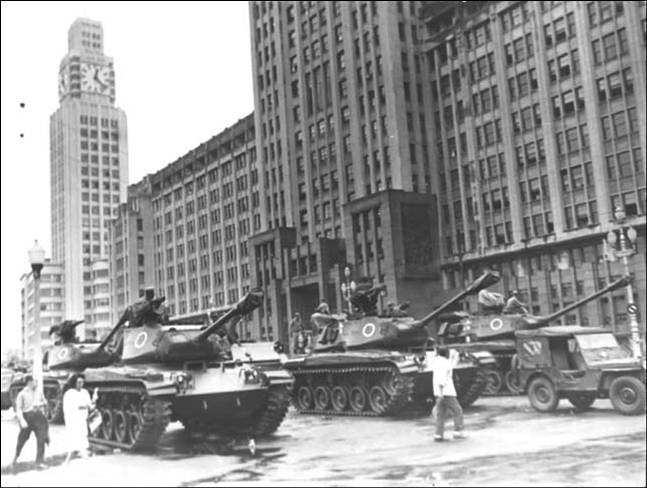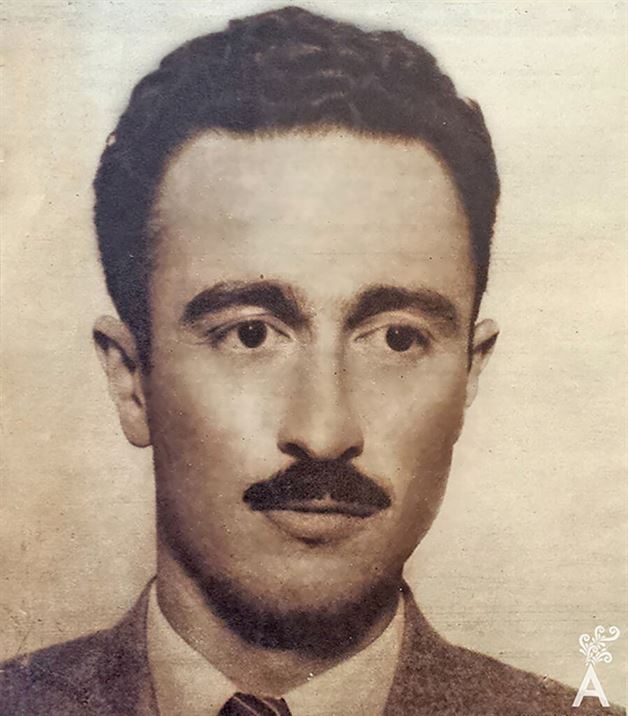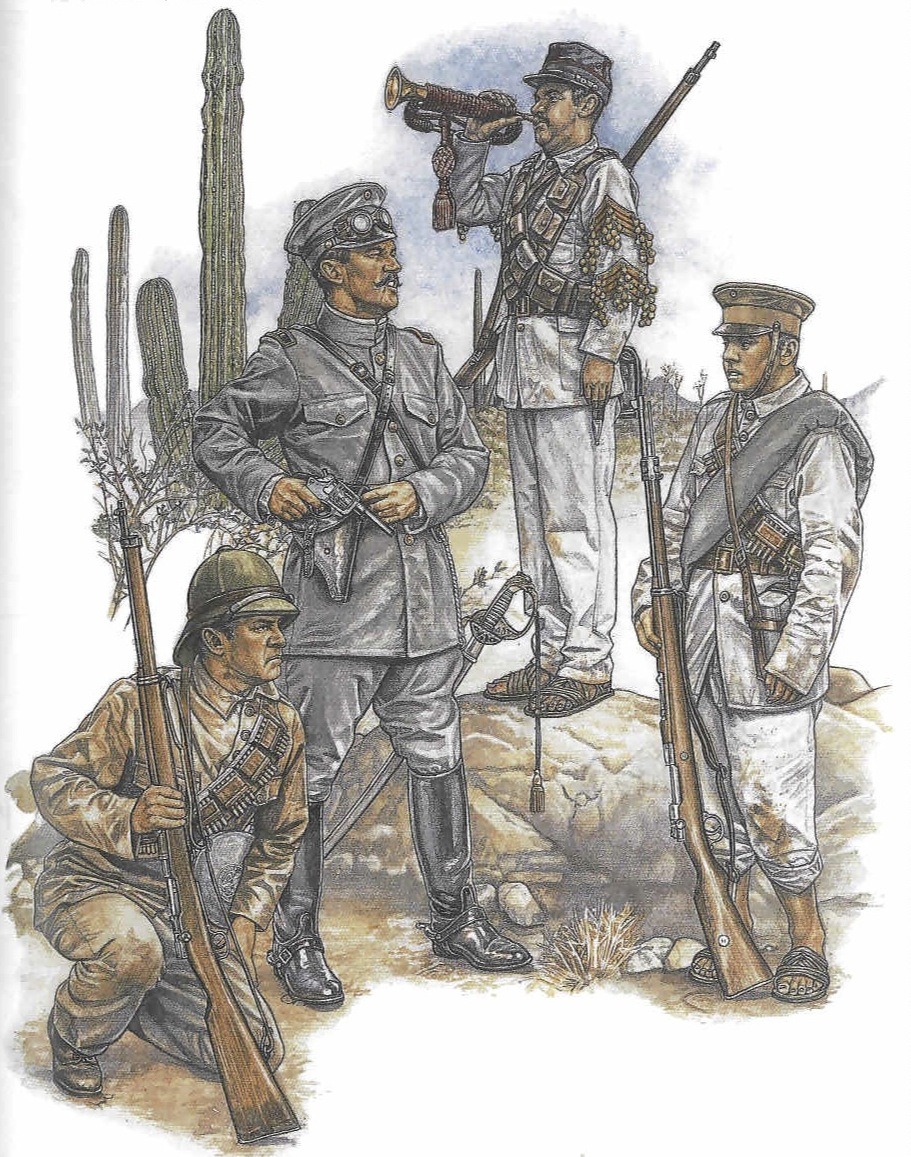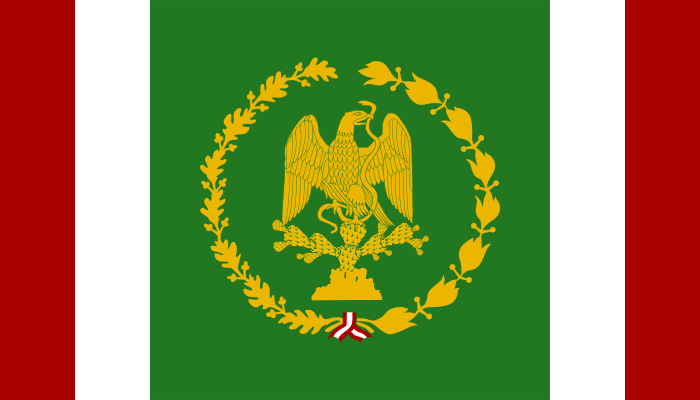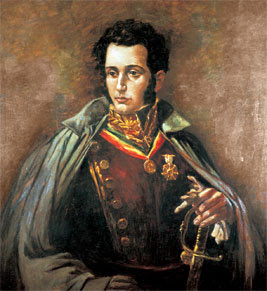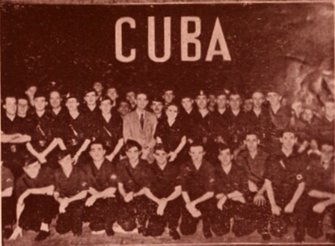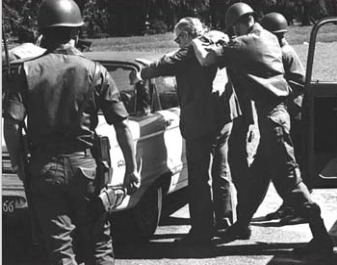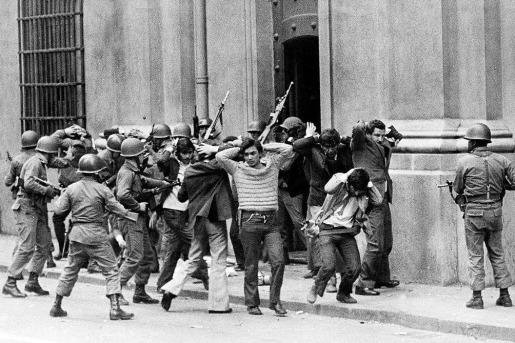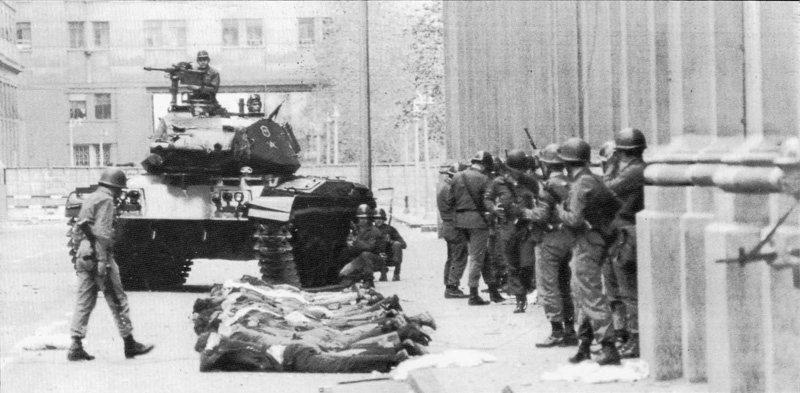DECLARATION OF THE UNITED AMERICAN REPUBLIC: AFTERMATH
The repercussions of the Declaration of Independence of the UAR was immediate. In the following week, the Governments at Paris and London were figuring out what to do with the 180,000 Appalachian troops still in France, while the Dominion of Canada, the Republic of Quebec, and the Acadian Federation worried of possible invasion (although this was unlikely, as the UAR government was more distracted in consolidating power).
King George V meets with military leaders to discuss the 'Appalachian problem', October 1917.
It was eventually decided that the Appalachian soldiers will remain on the front and fight along side the other Allied Forces, a decision which proved very unpopular with the Appalachians. They found themselves in a situation much like that of the Czechoslovak Legion; they couldn't go back home, and were currently being held by foreign powers as 'hostages of war'.
Two pages from a magazine, describing the events of the Fontaines Mutiny.
Instead of continuing the fight for the Allies, the Appalachians mutinied. In October, over 130,000 Appalachians left their posts and regrouped in the Forêt de Trois Fontaines. It was unknown how so many deserting troops were able to coordinate such movement, but it was later discovered that the Commander of Appalachian Armies in the Western Front, John Pershing, had ordered them to do so. Nevertheless, the Allies were stretched to the breaking point with the mutiny, having to send their troops to suppress it, only leading to a new front being open in the war.
Their German enemies saw an opportunity to end the war with a swift and decisive blow.
German Kaiser Wilhelm II with Generalfeldmarschall August von Mackensen during his visit to the recently captured Paris, February 1918.
The German army had planned an offensive in the spring of 1918, but the Fontaines Mutiny moved the date forward. On 10 January, 1918, the "Great Winter Offensive" took off. The Allies, still occupied with the mutiny, and not expecting a German offensive until after winter, were completely caught off guard. Within a month, Paris had fallen, the next month France surrendered. The mutineers became a problem to the Germans, but this was only for a short time. The Germans offered that if the Appalachians surrendered, they would not be treated as prisoners of war, and once the war was over, they would be sent back home. The mutineers, with no options left, decided to accept.
WWI would continue due to British stubbornness, but with an with a rebellious nation in the Americas, and a Germany reigning supreme in France, they had little chance in turning the war back to their favor.
(Here's a map of North America so that everyone knows how it looks. I know it's poorly edited, but hey, my computer broke down some time ago, so give me some slack.)
(Also, like this if you think that this could become its own developed timeline, even though I most likely won't make it anyway, as I leave creating complex timelines to other people.)







